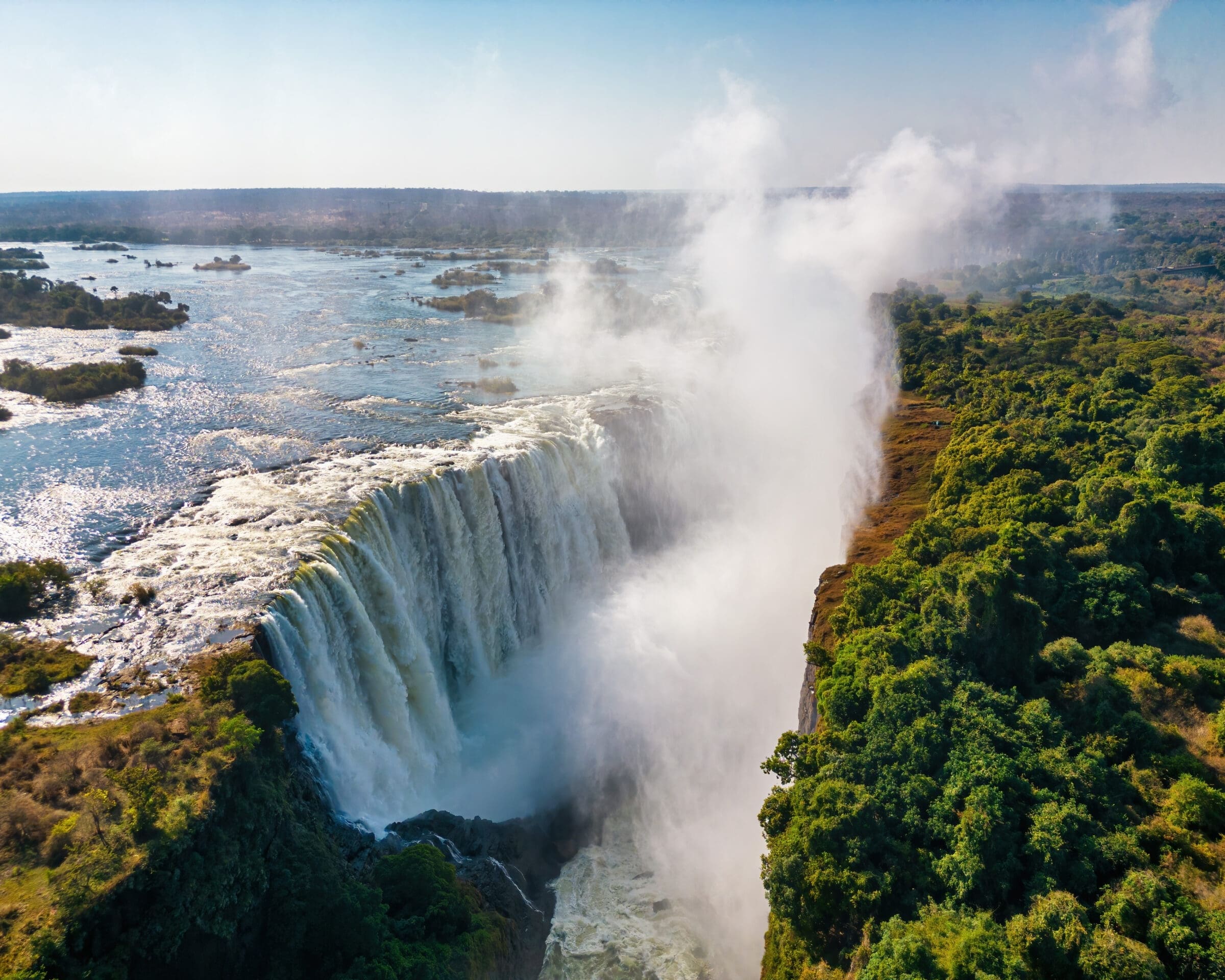Welcome to Zambia, a land where the wild beauty of nature is as boundless as the sky.
From the thundering majesty of Victoria Falls to the vast, wildlife-rich plains of the South Luangwa and Kafue National Parks, Zambia offers an unparalleled safari experience. Dive into the essence of Africa with walking safaris, river adventures, and starlit skies in remote bush camps.
Zambia is not just a destination; it’s an adventure that will capture your soul.

The Best Time To Visit
The best time to visit Zambia for wildlife viewing is during the dry season, from May to October. During these months, vegetation is sparse, and animals congregate around water sources, making them easier to spot. The weather is also cooler and more comfortable for safari activities, especially in the early mornings and late afternoons.
The dry season peaks from June to August, offering ideal conditions for exploring the bush and experiencing the wild heart of Zambia’s national parks, such as South Luangwa, Lower Zambezi, and Kafue. This period also coincides with the best time to see Victoria Falls in full flow, particularly from May to July, when the Zambezi River swells with rainwater, creating a spectacular display.
However, if you’re interested in bird watching or enjoying the lush landscapes, the wet season (November to April) might be more appealing. The “Emerald Season” transforms the environment into a vibrant green, with many birds breeding during this time. While some areas may be less accessible due to rain, many lodges offer discounts, and the parks are less crowded.
It’s worth noting that some lodges and camps in remote areas close during parts of the wet season due to accessibility issues, so planning ahead is crucial.
What To Know
In Zambia, the official language is English.
Besides English, Zambia is home to over 70 indigenous languages and dialects, reflecting the country’s rich cultural diversity. Among these, seven major local languages have been designated as regional languages. These include Bemba, Nyanja (Chewa), Tonga, Lozi, Lunda, Luvale, and Kaonde.
The currency used in Zambia is the Zambian Kwacha. It’s the official currency for all transactions within the country, from shopping and dining to accommodations and services.
For travelers, it’s advisable to have local currency on hand, especially when visiting smaller towns or making transactions in places where electronic payments may not be widely accepted. While major cities and tourist areas may accept credit cards, reliance on cash transactions remains high across much of Zambia.
Zambia is generally considered a safe destination for travelers, known for its welcoming people and political stability. Visitors often find themselves at ease exploring the country’s stunning natural landscapes, wildlife parks, and vibrant cities. However, as with any travel destination, it’s important to exercise common sense and stay aware of your surroundings to ensure a safe experience.
In urban areas like Lusaka and tourist spots such as Livingstone, it’s advisable to take precautions against petty crimes, including pickpocketing and bag snatching. Avoid walking alone at night, keep valuables secure and out of sight, and use reputable taxi services for transportation.
Travelers should also be aware of health-related issues, including the risk of malaria and the importance of drinking safe water. Ensuring you have the appropriate vaccinations and taking preventive measures against mosquito bites are recommended.
Public transport in Zambia primarily consists of minibuses, buses, and taxis. Minibuses are the most common form of public transportation, operating within cities and towns as well as between rural areas. They are a popular and affordable option for short and medium distances but can be crowded and may not adhere to a strict schedule.
For longer distances, intercity buses offer a more comfortable and reliable option, connecting major cities, towns, and tourist destinations across Zambia. These buses range from basic to luxury services, with some offering air conditioning and reserved seating.
Taxis are widely available in urban areas and at airports. While some taxis are metered, it’s more common to negotiate the fare before beginning your journey. For safety and reliability, it’s advisable to use taxis from reputable companies or those recommended by hotels and accommodations.
Though public transport in Zambia can get you to most places, services may vary in terms of comfort, safety, and reliability. Renting a car with a local driver or using organized tours can be a more convenient and flexible way to explore Zambia’s natural beauty and attractions.
Zambia Travel Guides
January 23, 2020
Elephant Climbs Over Wall To Steal Mango
December 22, 2019
